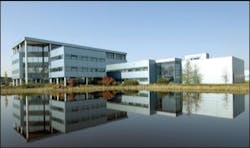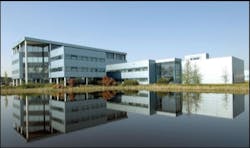By Craig Parker and Dwayne Frye
With sewer overflows and aging wastewater system infrastructure growing concerns across the U.S., , the Knoxville Utilities Board (KUB) is under a federal Consent Decree to make system improvements. KUB accelerated its wastewater improvement efforts by launching Partners Acting for a Cleaner Environment (PACE 10) in October 2004.
PACE 10 includes a mix of ongoing maintenance programs, replacement and rehabilitation to increase conveyance capacity, upgrades to optimize plant operations, and wet-weather storage facilities. KUB chose to include storage to more quickly and surely meet regulatory deadlines to eliminate sewer overflows and to help relieve stress on treatment plants during heavy rains.
To help bring storage online more rapidly, KUB elected to seek an alternative to the traditional design/bid/build method of project delivery. It decided to engage a qualified construction manager (CM) to deliver four storage projects with a total volume of 21.25 million gallons via the CM-at-risk method. With that method, the construction manager agrees to deliver the project within a specified timeframe and under a negotiated Guaranteed Maximum Price (GMP). KUB based its decision on numerous factors, including schedule, quality, economy, and change management, and staff carefully considered each factor during selection of the CM firm.
The CM-at-risk method won out for two primary reasons:
- The shorter projected schedule for overall project delivery – with CM-at-risk, the CM can accelerate procuring major equipment and start construction before having a completed design and before obtaining all permits and approvals. Though an early start can be risky, its potential benefits outweighed the KUB team's concerns.
- The advantage of construction quality and innovation – CM-at-risk offers qualifications-based selection, constructability/Value Engineering reviews at each phase of design, and provisions for shared savings.
All in all, CM-at-risk supported a faster delivery schedule, more quality oversight, and greater flexibility. It also limited the risk of cost and schedule growth, contractual entities, points of responsibility, claims for additional cost, and construction headaches.
Following a qualifications-based construction manager selection process, KUB chose Brasfield & Gorrie, LLC of Birmingham, Alabama to deliver the four storage facilities via CM-at-risk, where the construction manager self-performs all work for which it is qualified. The CM self-performed work included excavation, reinforced concrete, process piping, equipment installation, and building construction. The four projects were designed, constructed, and commissioned in 30 months at a total construction cost of approximately $47 million.
KUB also faced a similar challenge of constructing two additional storage facilities with a combined storage volume of 12 million gallons to provide wastewater treatment plant peak-flow equalization. Even though the CM-at-risk delivery method was highly effective for the accelerated delivery of the initial four facilities and still favored over the conventional design/bid/build process, KUB sought to encourage a higher degree of cost-competitiveness on the two additional facilities.
To achieve that goal, KUB again solicited and ultimately selected a construction manager through a qualifications-based selection process. KUB selected the same CM for the two peak-flow storage projects, but KUB required that it competitively bid all work. With the exception of major equipment purchase, which was the responsibility of the CM, all of the construction work was performed by subcontractors under the direction of the CM. The two facilities became fully operational in June 2011 at a total construction cost of $37 million, with $5 million of that total spent on site remediation at one location.
As they worked through the CM-at-risk process using both the self-perform and the competitive-bid variations, KUB and Gresham, Smith and Partners, as the project design consultants, learned these important lessons:
- Both methods have potential advantages and disadvantages that owners must weigh carefully to meet their individual needs. For example,
- One owner may choose competitive bidding because its top priority is to better control costs.
- Another owner with a short timeframe for completion may choose the self-perform method because it can offer better schedule control, quality control, and other benefits from having one team throughout all aspects of the project.
- The project manager and project superintendent are key to the project's success with CM-at-risk, just as with any other construction project.
- The higher the degree of difficulty, the more valuable the CM.
Ultimately, KUB expressed a high degree of satisfaction with both the self-perform and competitive-bid CM-at-risk methods. KUB will definitely consider using CM-at-risk on future projects and will choose either the self-perform or competitive-bidding method on a case-by-case basis.
About the Authors: Craig S. Parker, P.E., is a senior environmental engineer in the Water Services division at Gresham, Smith and Partners and manager of GS&P's Knoxville office. He has more than 21 years of experience in project management, engineering design, and construction of water and wastewater infrastructure projects. G. Dwayne Frye, P.E., is a Senior Project Engineer in KUB Collection System Improvement and a key member of the KUB PACE 10 program team. Frye is also a Past-President of the KY-TN Water Environment Association (1993-94). Circle No. 271 on Reader Service Card
More WaterWorld Current Issue Articles
More WaterWorld Archives Issue Articles




